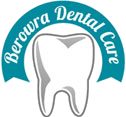Preventive Dentistry
Cleaning and prevention.
- Dental Exams & Cleanings
Dental Exam
A comprehensive dental exam will be performed by your dentist at your initial dental visit. At regular check-up exams, your dentist and hygienist will include the following Examination of diagnostic x-rays (radiographs). Oral cancer screening: Check the face, neck, lips, tongue, throat, tissues, and gums for any signs of oral cancer Gum disease evaluation: Check the gums and bone around the teeth for any signs of periodontal disease Examination of tooth decay: All tooth surfaces will be checked for decay with special dental instruments Examination of existing restorations: Check current fillings, crowns, etc Dental Cleaning.Professional dental cleanings (dental prophylaxis) are usually performed by Registered Dental Hygienists and include the following:
Removal of calculus (tartar): Calculus is hardened plaque that has been left on the tooth for some time and is now firmly attached to the tooth surface. Removal of plaque: Plaque is a sticky, almost invisible film that forms on the teeth. It is a growing colony of living bacteria, food debris, and saliva. The bacteria produce toxins (poisons) that inflame the gums which is the start of periodontal disease! Teeth polishing: Remove stain and plaque that is not otherwise removed during tooth brushing and scaling - Digital x-ray
- Digital x-ray is the latest technology used to take dental x-rays. This technique uses an electronic sensor (instead of x-ray film) that captures and stores the digital image on a computer. This image can be instantly viewed and enlarged helping the dentist and dental hygienist detect problems easier. Digital x-rays reduce radiation 80-90% compared to the already low exposure of traditional dental x-rays. A full mouth series of dental x-rays is recommended for new patients
- A full series is usually good for a few years. Bite-wing x-rays (x-rays of top and bottom teeth biting together) are taken (check-up).
- For extractions, particularly wisdom teeth an OPG (orthopentogram) is needed to examine the entire jaw. When considering orthodontics an OPG and a CEP (encephalogram) are also needed.
- Fluoride Treatment
Fluoride is the most effective agent available to help prevent tooth decay. It is a mineral that is naturally present in varying amounts in almost all foods and water supplies. Your dentist or dental hygienist may recommend the use of home and/or professional fluoride treatments for the following reasons:- Deep pits and fissures on the chewing surfaces of teeth
- Exposed and sensitive root surfaces
- Fair to poor oral hygiene habits
- Frequent sugar and carbohydrate intake
- Inadequate exposure to fluorides
- Inadequate saliva flow due to medical conditions, medical treatments or medications
How does it Work?
Topical Fluoride
This strengthens the teeth once they have erupted by seeping into the outer surface of the tooth enamel, making the teeth more resistant to decay. We gain topical fluoride by using fluoride containing dental products such as toothpaste, mouth rinses, and gels. Dentists generally recommend that children and adults have a professional application of fluoride twice a year during dental check-ups.
Systemic Fluoride
This strengthens the teeth that are developing under the gums. We gain systemic fluoride from most foods and our community water supplies. It is also available as a supplement in drop or gel form and can be prescribed by your dentist or physician. Fluoride alone will not prevent tooth decay!
It is important to brush at least twice a day, floss regularly, eat balanced meals, reduce sugary snacks, and visit your dentist on a regular basis - Sealants
What is a Sealant?
A sealant is a thin, plastic coating applied at the dental practice to the chewing surface of molars, premolars and any deep grooves (called pits and fissures) of your teeth
More than 75% of dental decay begins in these deep grooves. Teeth with these conditions are hard to clean and are very susceptible to decay. A sealant protects the tooth by sealing deep grooves, creating a smooth, easy to clean surface.
Sealants can protect teeth from decay for many years, but need to be checked for wear and chipping at regular dental visits.Who should Consider Sealants?- Children and teenagers – As soon as the six-year molars (the first permanent back teeth) appear or any time throughout the cavity prone years of 6-16
- Adults – Tooth surfaces without decay that have deep grooves or depressions
